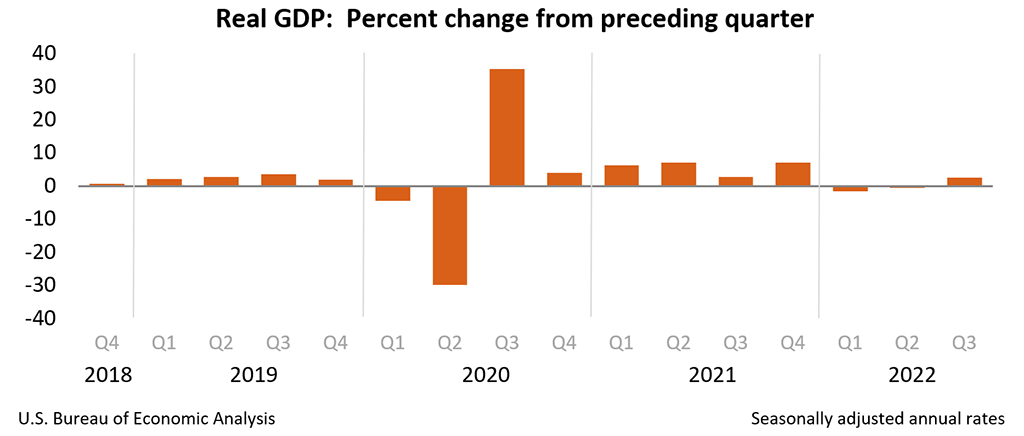U.S. real Gross Domestic Product (GDP) increased at an annual rate of 2.6 percent in 3Q2022, according to the «advance» estimate released by the Bureau of Economic Analysis.
In the second quarter, real GDP declined 0.6 percent.
In general, the GDP estimate released Thursday is based on source data that is incomplete or subject to further revision by the source agency.

The «second» estimate for the third quarter, based on more complete data, will be released on November 30, 2022.
The increase in real GDP reflected increases in exports, consumer spending, nonresidential fixed investment, federal government spending, and state and local government spending, which were partially offset by declines in residential fixed investment and private inventory investment.
At the same time, imports, which are a subtraction in the GDP calculation, declined.
United States GDP
The increase in exports reflected increases in both goods and services.
Within goods exports, the main contributors to the increase were industrial supplies and materials (especially petroleum and products, as well as other non-durable goods), and non-automotive capital goods.
For services exports, the increase was led by travel and «other» business services (mainly financial services).
Within consumer spending, the increase in services (led by health care and «other» services) was partially offset by the decline in goods (led by motor vehicles and parts, as well as food and beverages).
With respect to nonresidential fixed investment, increases in equipment and intellectual property products were partially offset by a decline in structures.
The increase in federal government spending was led by defense spending. The increase in state and local government spending primarily reflected higher compensation for state and local government employees.
Imports
Within fixed investment in housing, the main factors contributing to the decline were new single-family construction and broker commissions.
The decline in private inventory investment was primarily due to the decline in retail trade (led by «other» retail).
On the import side, the decline in imports of goods (mostly consumer goods) was partially offset by an increase in imports of services (mostly travel).

